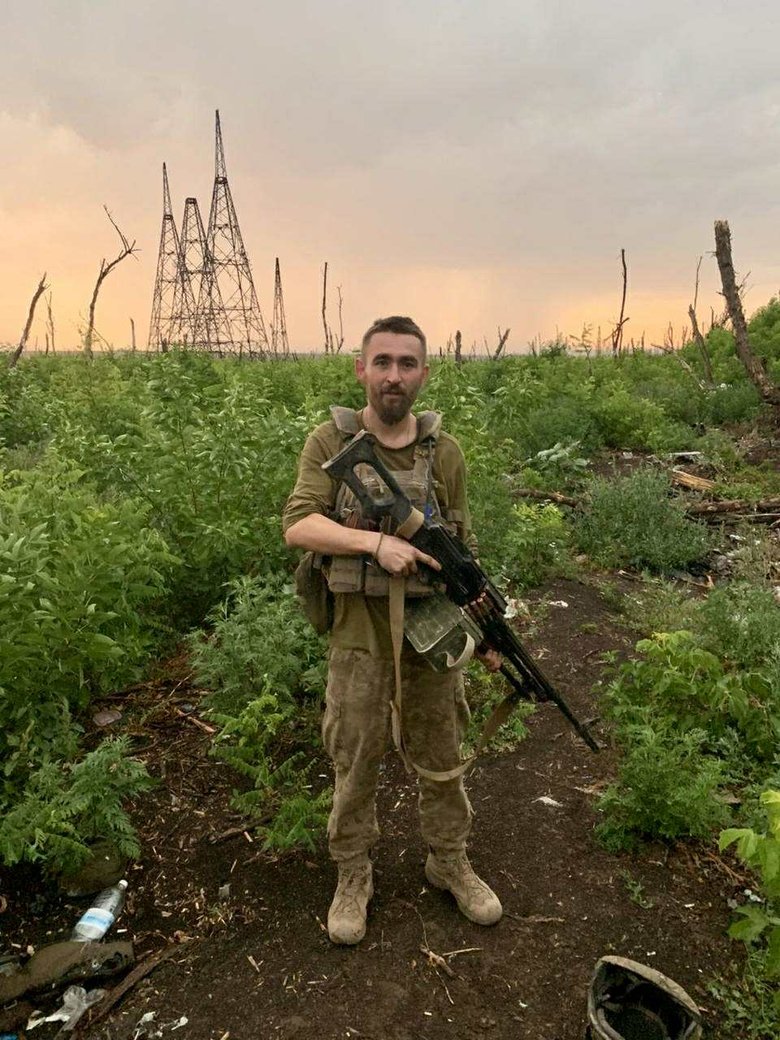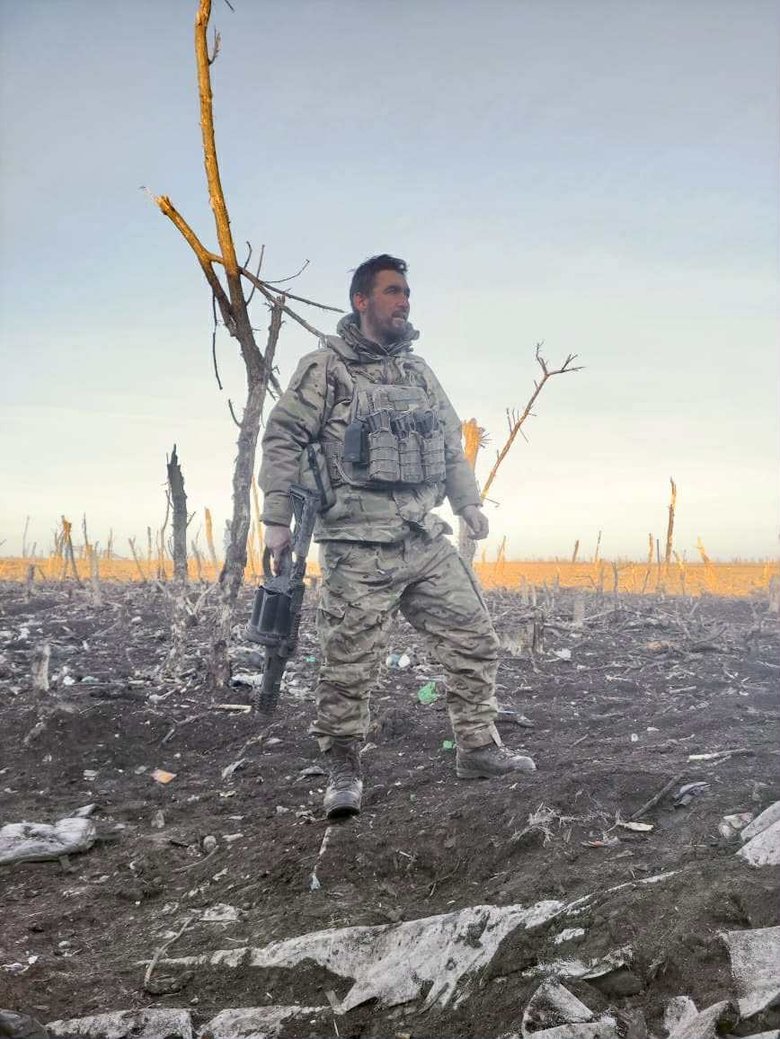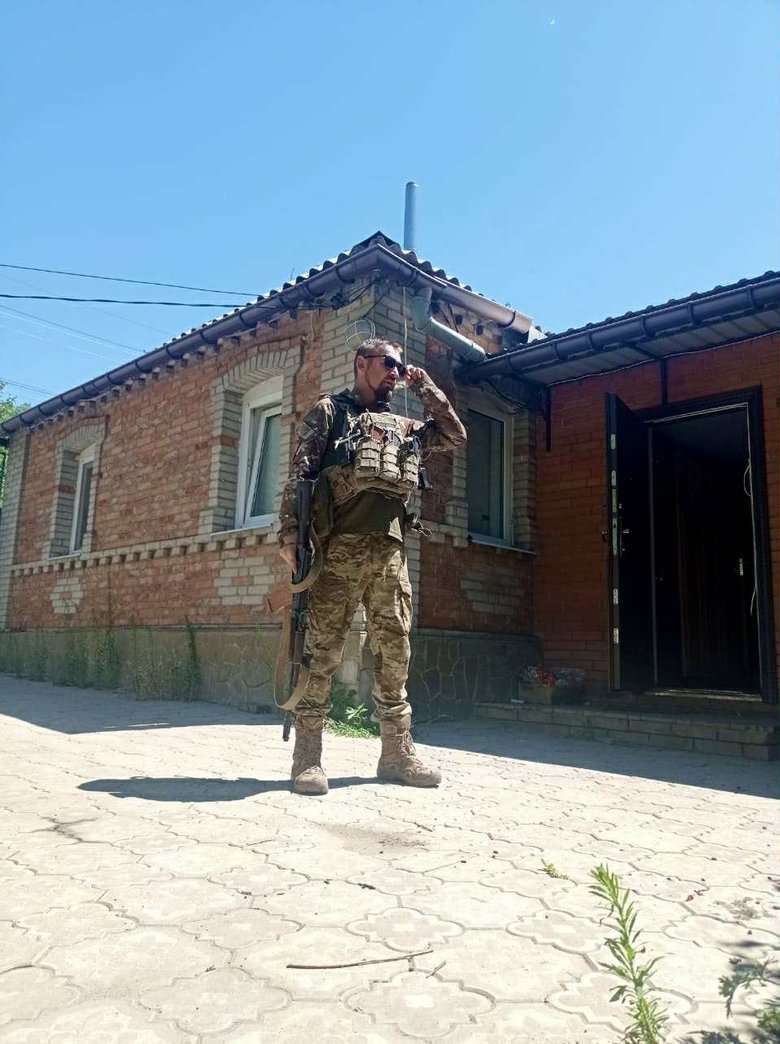Sergeant Senkiv’s last battle
In my inbox, there is a letter about a soldier’s decoration, with "posthumous" in uppercase in parentheses. Each time it feels as if I cut myself on that inscription, but I don’t look away immediately; I linger for a moment and silently thank the hero.
Initially, I planned to write about one of the heroic units—the 3rd Border Detachment named after Hero of Ukraine Lieutenant Colonel Yevhenii Pikus. But while the article was being prepared, one of the soldiers who had spoken about serving in it was killed. So I want to tell the story of Taras Senkiv, an apparently ordinary young man from the Lviv region with a completely civilian, creative profession, who went to defend his country and, in a very short time, became a true warrior.
Our conversation took place over the phone while Taras was on leave.
"I’m from the Lviv region," Senkiv says. "I was mobilized two years ago, in 2023. At first, I served in the 7th Lviv Detachment, completed training, went to the UK, and then our unit was disbanded and we were reassigned to other units. Some to the Luhansk detachment, some to the Donetsk detachment. That’s how I ended up in the unit where I serve now."
His profession is distinctly peaceful, one might even say "gentle": he is an artist. He finished art school and a lyceum, worked at a local glass factory where he initially only painted, and later, after mastering the art of glassblowing, created vases from scratch. After a while, he left the factory and became a tattoo artist.
You’d think a creative job has nothing to do with martial virtues. What is it like to be an artist at war?
"Somehow it all comes to you," Taras explains. "Until you actually get into the army, you don’t know whether it’s for you or not. I had never been a serviceman either, so I expected everything to be much worse.
In the army, responsibility and the precise execution of orders are crucial. And artists think a bit differently. I thought that would get in the way, but it turned out to be the opposite: it helps you look at a tough situation from another angle and do things better. Even on the battlefield, you can come up with something different from how you were taught and apply your creative skills."
It also matters greatly, in Taras Senkiv’s view, where exactly you fight:
"Our commanders are people who have been through the war themselves, who have been on the zero line. We don’t have the so-called ‘Soviet-style’ ones who never fought and only lecture subordinates. In other units, many of my friends have been killed, and they also say it’s senseless; a lot of people go AWOL because of that. I’ve heard all kinds of stories."
"I was scared too," Taras admitted. "At first I tried not to think about it at all; later you somehow get used to it, though of course it depends on the person. But the hardest thing is dealing with panickers. There are people who keep saying, ‘We’re all going to be killed,’ and that’s very hard to bear. You’re trying to distract yourself and not panic, and you still have to calm him down. And on the zero line, anything can happen, no one is truly prepared for that."
Taras spoke about his military work matter-of-factly, in simple words, and a chill ran down my spine at what I heard. Because this is exactly what has been happening for these three and a half years, right now, as I write and you read these lines, and no one knows how long it will continue.
"At first, there were hardly any drones, neither on our side nor the Russians', they were used only for reconnaissance. I remember our first sorties: of course, the enemy watched us with drones, and only after that did the mortars start working. Drones weren’t hunting us the way they do now, so it was calmer both to move into position and to pull back.
We moved in and they shelled us with mortar fire, I remember rounds landing nearby, detonating. You think that’s it, but a mortar isn’t as terrifying as it seems. A drone, though, can chase you down and reach you anywhere; it’s hard to hide from it. Only cover helps. And then a second drone will come, this one with a drop munition."
Taras remembered his first battle in detail. Perhaps because it was very hard and felt somehow endless:
"We were holding the position, everything was fine. About ten days had passed; we were about to rotate out, relief was coming. As usual, reconnaissance came first and said everything was fine, it was quiet. Then we heard someone started shooting. Our positions were next to each other. We got on the radio: ‘Is that you firing?’—‘No, not us.’ Our section leader ran out, looked, and started shouting: we’re under assault. I’d never faced anything like that. The section leader didn’t survive. We moved over to our guys at another position. It was a fierce fight."
Taras fell silent, and I didn’t rush him; I waited for him to steady himself. A minute later, he went on:
"Then there were many wounded, our relief was already underway… After that, we carried out evacuation; we were carrying them out for two days. But the enemy knew about the evacuation from the other side and was waiting for us accordingly. We withdrew under heavy fighting, it was horrific.
Later, we withdrew, but one more remained to be recovered. Another persons returning from the positions were supposed to go. Suddenly, they got on the radio to us: ‘Guys, you have to bail us out, turn back, we can’t pull one man out. And we’re exhausted, and the heavy rains have turned everything into bogs; it’s impossible to move, but we have to…’ So we turned back and carried them out, and it was awful there. The group that went to extract the one who was left came under fire themselves, and they already had even more seriously wounded (WIA). We had to go back again. We went back three times."
Taras fell silent again and then continued, speaking about a different incident.
"This was also at the position. I was about to relieve the guy and went on watch, had already reached the spot, when I heard a grenade come flying into our dugout. The guy I was relieving ran toward me. I asked, ‘Was that dropped from a drone or thrown?’ He said, ‘Thrown.’ Right then, the commander called me and said, ‘Two of them have slipped into your position, do something.’ I crept up quietly to the ones who got in, and they didn’t see us because they came in through another entrance. I tossed them a couple of grenades. I thought that was it, but it turned out fine.
By the way, the enemy can take a very long time to get to you, crawl up for a whole day, even. We monitor their radios, but we still don’t know exactly where they are physically, even if we understand they’re inching our way."
Our conversation took place back in the summer; we agreed to speak again because we had to cut it short about halfway through, but the second call never happened. So from here on, Taras ("the Artist") Senkiv is remembered by his comrade Mykhailo ("Mak") Sytnychenko, head of the fire support section. At the time he fought alongside the Artist, he served as an infantry squad leader.
"A good person, a good friend, responsible and brave," Mykhailo recalls. "We repelled assaults together, last year, during a rotation we took up positions together; he was always the senior on the position, regardless of rank. With him, there was never a problem to fortify a position, beat back an assault, shoot, dig, evacuate KIA or WIA."
Mykhailo recalls an episode when Taras showed a truly creative way of solving a difficult problem:
"People were moving through a small grove and kept getting blown up, and the unit commander asked us to do something to stop it. We got creative, we ordered a small hand scythe and went in at first light, even though the conditions didn’t allow it; we cut a 150–200-meter path through the mined grove and shot a video. After that, our comrades stopped triggering mines there, because they followed the route we had cut with our own boots."
According to Sytnychenko, Taras was a leader, he was behind most of the repelled assaults in their infantry engagements:
"Men like the Artist were always sent where it was hardest, where you had to keep yourself going," says Mykhailo Sytnychenko. "The positions were tough; he would sit for a couple of days without food or water because there was no way to supply them, the position was right on the zero line, the very front. And the tasks he was assigned were the kind only a handful could carry out. He was always given the hardest jobs because he treated them responsibly and completed them no matter what. From his very first sortie, he proved himself a brave soldier. He could back you up on the battlefield when things were rough, and he could help physically, carry you out. He was a reliable comrade-in-arms.
"Though he was 32 at the time, he seemed older, more level-headed, thoughtful. When you remember him, it’s always some positive moment that makes you want to smile."
…Behind the spare wording of that letter, marked "Posthumous", unfolds the path of a true hero, full of courage and selflessness. The names of villages, towns and small cities flash by, places where fierce battles raged; the names of positions; then dry descriptions of events. The entire combat path of Taras Hryhorovych Senkiv, born in January 1991: a sergeant, a Border Service inspector of the 2nd category, a UAV operator with the 2nd Rapid Response Border Commandant’s Office of the 3rd Detachment named after Hero of Ukraine Lieutenant Colonel Yevhenii Pikus.
The last battle of "the Artist" was recounted by Ruslan Kasianenko, Deputy Commandant for Morale and Psychological Support of the 2nd Rapid Response Border Commandant’s Office "SHCHYT" ("Shield").
According to him, on September 13, Taras and his comrade were returning from a difficult mission, weary and exhausted after nearly a month on position in inhuman conditions. They were glad that a key task, UAV reconnaissance of enemy positions, had been carried out successfully. They dreamed of washing up, having hot tea or coffee, and finally getting some sleep.
Suddenly, three enemy saboteurs burst out in front of them, and a small-arms fight broke out. The enemy’s major advantage was surprise. In such moments, there is no help to be had, everything is decided by skill at arms, quick wits, and ruse of war. Taras, who always put his comrades first, managed to radio that the enemy had infiltrated our rear. Had he not warned them and both men been killed, the saboteurs could have caused great harm.
As a result of the fight, all three members of the enemy sabotage group were killed; Senkiv’s comrade sustained a severe wound, and Taras himself died of unsurvivable wounds.
"Any victory, any action, any success on the battlefield means a loss of personnel," Ruslan Kasianenko says. "Of course, we lose everything: weapons, equipment, but all of that can be replenished, restored. But people… people pay the highest price. Behind the successes of any unit, however successful they may seem at first glance, there are soldiers who did everything to achieve that success and to hold back the enemy onslaught. It never happens that we don’t lose our brothers-in-arms. The price varies from case to case, but it is always far too high. That was the worst of it, the understanding that we will die is always there."
For personal courage, selfless service, and heroism displayed while carrying out combat missions to repel the armed aggression of the Russian Federation in the Donetsk region, Sergeant Taras Hryhorovych Senkiv has been nominated for the Order of Courage, 3rd class (posthumous).
* * *
Back in 1997, when I was working at another publication, we decided to interview first-graders, the same age as independent Ukraine. Cheerful and lively, everything felt new and exciting to them: the school uniform, the satchel, the walk to school. I asked those kids what they dreamed about, who they wanted to become, what they expected from school. Somewhere in the Lviv region at that time, little Taras Senkiv was probably heading to school too, imagining a long, happy, peaceful life. Yet he, like most of his peers, had to stand up for his country, so that other first-graders could grow up in a free land.
It was an honor to speak with you, "the Artist." Thank you for your protection.
Friends, the heroic 2nd Rapid Response Border Commandant’s Office "SHCHYT" of the 3rd Border Detachment named after Hero of Ukraine Colonel Yevhenii Pikus (the "POMSTA" Offensive Guard brigade) needs our help. Below is the Monobank card number:
4441 1111 2499 7812
Every hryvnia you donate depletes the enemy’s ranks and helps our defenders come home alive and unharmed.
Tetiana Halkovska, Censor. NET



